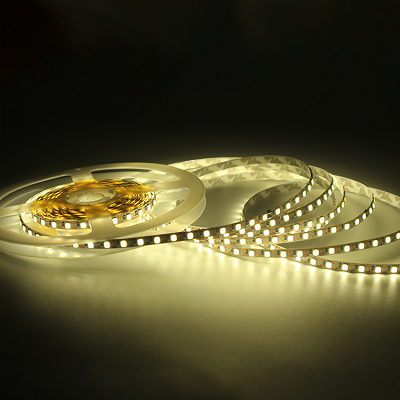Hi,Welcome to TEEKUV Site!
Language
Flexible Polymer: Led Strips are typically encapsulated within a flexible polymer material, such as polyurethane or silicone. This protective coating shields the delicate electronic components from external factors like moisture, dust, and physical damage. The flexibility of the polymer allows for easy installation in various shapes and contours, making LED strips adaptable to a wide range of applications.

LED Chips: The heart of LED strips lies in the LED chips themselves. These semiconductors, usually made of materials like gallium arsenide or gallium nitride, emit light when an electric current passes through them. LED chips are incredibly energy-efficient, durable, and offer a wide spectrum of colors. Additionally, advancements in technology have led to the development of miniaturized LED chips, allowing for higher density and improved lighting effects.
Circuit Board: The circuit board serves as the backbone of LED strips, providing a platform for organizing and connecting the LED chips. Typically made of fiberglass or aluminum, the circuit board ensures the efficient flow of electricity and heat dissipation, crucial for maintaining the longevity and performance of the LEDs. Circuit boards also facilitate the integration of additional features like dimming capabilities or color-changing effects.
Adhesive Backing: To simplify installation, LED strips often come with adhesive backing. This adhesive layer, usually made of acrylic or foam, allows the strips to be securely attached to various surfaces, including walls, ceilings, or furniture. The adhesive backing ensures a clean and seamless application, eliminating the need for additional mounting hardware.
Diffusion Material: LED strips can be enhanced with diffusion materials to achieve desired lighting effects. Diffusion materials, such as frosted or opal covers, evenly distribute the light emitted by the LEDs, reducing glare and creating a softer and more uniform illumination. These materials transform the individual points of light into a continuous and visually pleasing glow.

Waterproofing Materials: LED strips intended for outdoor or wet environments often incorporate additional waterproofing materials. Silicon or resin coatings protect the LED chips and circuitry from moisture, allowing the strips to withstand rain, humidity, or even submersion in water. Waterproof LED strips enable creative lighting applications in gardens, swimming pools, or architectural facades.
As LED strip technology continues to advance, manufacturers are exploring new materials and techniques to enhance their performance and aesthetics. From ultra-thin designs to RGB color-changing capabilities, LED strips are evolving to offer an ever-expanding range of lighting possibilities.
With their energy efficiency, flexibility, and versatility, LED strips have become a popular choice for both residential and commercial lighting design. As we embrace the era of intelligent illumination, let us appreciate the materials that make LED strips possible, paving the way for innovative and sustainable lighting solutions that brighten our lives.
 WhatsApp:
WhatsApp: Phone:
Phone: Contact Now
Contact Now